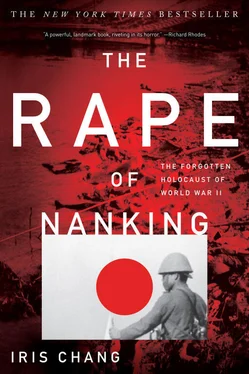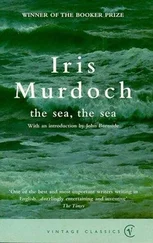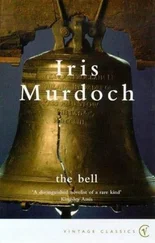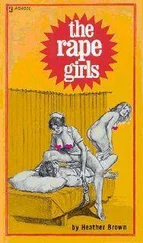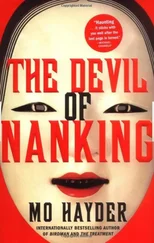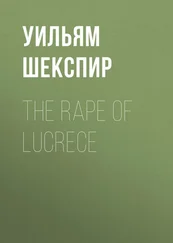I first learned about the Rape of Nanking when I was a little girl. The stories came from my parents, who had survived years of war and revolution before finding a serene home as professors in a midwestern American college town. They had grown up in China in the midst of World War II and after the war fled with their families, first to Taiwan and finally to the United States to study at Harvard and pursue academic careers in science. For three decades they lived peacefully in the academic community of Champaign-Urbana, Illinois, conducting research in physics and microbiology.
But they never forgot the horrors of the Sino-Japanese War, nor did they want me to forget. They particularly did not want me to forget the Rape of Nanking. Neither of my parents witnessed it, but as young children they had heard the stories, and these were passed down to me. The Japanese, I learned, sliced babies not just in half but in thirds and fourths, they said; the Yangtze River ran red with blood for days. Their voices quivering with outrage, my parents characterized the Great Nanking Massacre, or Nanjing Datusha, as the single most diabolical incident committed by the Japanese in a war that killed more than 10 million Chinese people.
Throughout the book I use either pinyin or Wade-Giles for Chinese names, depending on the preference of the individual (as specified by business cards or correspondence) or the popularity of one name’s transliteration over the other (for instance, “Chiang Kai-shek” instead of “Jiang Jieshi”). For Chinese and Japanese names of people, I use the traditional system of listing the surname before the given name. For cities and landmarks, I typically (but not always) use the form of romanization most commonly employed by Westerners during the era of the narrative, such as “Nanking” instead of the present-day name “Nanjing.”
Throughout my childhood Nanjing Datusha remained buried in the back of my mind as a metaphor for unspeakable evil. But the event lacked human details and human dimensions. It was also difficult to find the line between myth and history. While still in grade school I searched the local public libraries to see what I could learn about the massacre, but nothing turned up. That struck me as odd. If the Rape of Nanking was truly so gory, one of the worst episodes of human barbarism in world history, as my parents insisted, then why hadn’t someone written a book about it? It did not occur to me, as a child, to pursue my research using the mammoth University of Illinois library system, and my curiosity about the matter soon slipped away.
Almost two decades elapsed before the Rape of Nanking intruded upon my life again. By this time I was married and living a quiet life as a professional author in Santa Barbara, California, when I heard from a filmmaker friend that a couple of producers on the East Coast had recently completed a documentary on the Rape of Nanking but faced trouble getting funds to distribute the film properly.
His story rekindled my interest. Soon I was on the phone talking to not just one but two producers of documentaries on the subject. The first was Shao Tzuping, a Chinese-American activist who had worked for the United Nations in New York, served as a past president of the Alliance in Memory of Victims of the Nanjing Massacre, and helped produce the videotape Magee’s Testament. Another was Nancy Tong, an independent filmmaker who had produced and codirected with Christine Choy the documentary In the Name of the Emperor. Shao Tzuping and Nancy Tong helped plug me into a network of activists, many of them first-generation Chinese Americans and Chinese Canadians who, like me, felt the need to bear witness to the event, to document and publicize it, and even to seek restitution for the atrocities of Nanking before all the surviving victims passed away. Others wanted to pass their wartime memories down to their children and grandchildren, fearful that their assimilation into North American culture might cause them to forget this important part of their historical heritage.
What strengthened much of this newly emerging activism was the Tiananmen Square massacre of 1989, which prodded Chinese communities all over the world to form networks to protest the actions of the People’s Republic of China. The pro-democracy movement left behind vast, intricate webs of Internet relationships; out of this network a grassroots movement emerged to promote the truth about Nanking. In urban centers with high concentrations of Chinese—such as the San Francisco Bay Area, New York City, Los Angeles, Toronto, and Vancouver—Chinese activists organized conferences and educational campaigns to disseminate information about Japanese crimes during World War II. They exhibited films, videos, and photographs of the Nanking massacre in museums and schools, posted facts and photographs on the Internet, and even placed full-page advertisements on the subject in newspapers like the New York Times. Some of the activist groups were so technologically sophisticated that they could at the push of a button send messages to more than a quarter-million readers worldwide.
That the Nanking massacre of my childhood memories was not merely folk myth but accurate oral history hit me in December 1994, when I attended a conference sponsored by the Global Alliance for Preserving the History of World War II in Asia, which commemorated the victims of the Nanking atrocities. The conference was held in Cupertino, California, a San Jose suburb in the heart of Silicon Valley. In the conference hall the organizers had prepared poster-sized photographs of the Rape of Nanking—some of the most gruesome photographs I had ever seen in my life. Though I had heard so much about the Nanking massacre as a child, nothing prepared me for these pictures—stark black-and-white images of decapitated heads, bellies ripped open, and nude women forced by their rapists into various pornographic poses, their faces contorted into unforgettable expressions of agony and shame.
In a single blinding moment I recognized the fragility of not just life but the human experience itself. We all learn about death while young. We know that any one of us could be struck by the proverbial truck or bus and be deprived of life in an instant. And unless we have certain religious beliefs, we see such a death as a senseless and unfair deprivation of life. But we also know of the respect for life and the dying process that most humans share. If you are struck by a bus, someone may steal your purse or wallet while you lie injured, but many more will come to your aid, trying to save your precious life. One person will call 911, and another will race down the street to alert a police officer on his or her beat. Someone else will take off his coat, fold it, and place it under your head, so that if these are indeed your last moments of life you will die in the small but real comfort of knowing that someone cared about you. The pictures up on that wall in Cupertino illustrated that not just one person but hundreds of thousands could have their lives extinguished, die at the whim of others, and the next day their deaths would be meaningless. But even more telling was that those who had brought about these deaths (the most terror-filled, even if inevitable, tragedy of the human experience) could also degrade the victims and force them to expire in maximum pain and humiliation. I was suddenly in a panic that this terrifying disrespect for death and dying, this reversion in human social evolution, would be reduced to a footnote of history, treated like a harmless glitch in a computer program that might or might not again cause a problem, unless someone forced the world to remember it.
During the conference I learned that two novels about the Nanking massacre were already in the works ( Tree of Heaven and Tent of Orange Mist , both published in 1995), as well as a pictorial book about the massacre ( The Rape of Nanking: An Undeniable History in Photographs , published in 1996). But at the time no one had yet written a full-length, narrative nonfiction book on the Rape of Nanking in English. Delving deeper into the history of the massacre, I learned that the raw source material for such a book had always existed and was available in the United States. American missionaries, journalists, and military officers had all recorded for posterity in diaries, films, and photographs their own views of the event. Why had no other American author or scholar exploited this rich lode of primary source material to write a nonfiction book or even a dissertation exclusively devoted to the massacre?
Читать дальше
